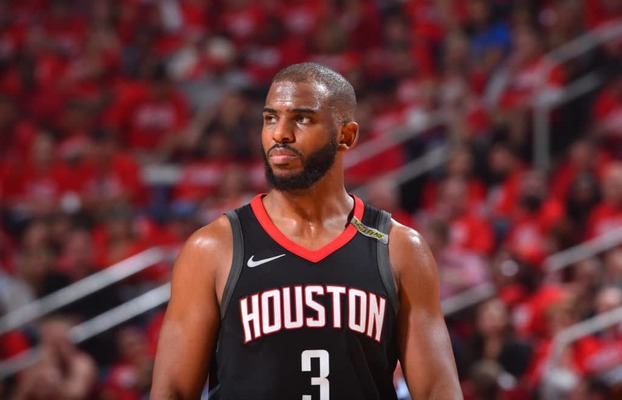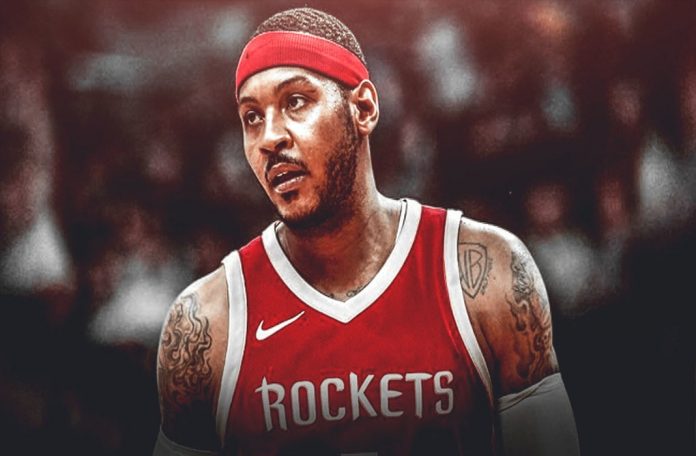When the Houston Rockets made the move to sign Carmelo Anthony when he cleared waivers after a storied career as a Hawk, numerous eyebrows across the league rose in unison. Anthony appeared to be the antithesis of Houston’s statistically precise methodology and would stick out defensively like a sore thumb. The Rockets fast-paced system emphasizes high-percentage three-point shot and a lot of them. Melo, an artist in the mid-range, stands in stark contrast to the long-range snipers that populate the rest of the roster. Yes, the Rockets did adopt a player antithetical to their model last year in Chris Paul, but he made up for his sacreligious mid-range inclinations with superior court vision, leadership, and ability to take ball-handling pressure off Harden.

Carmelo can do none of those things. He’s not a good passer, primary ball-handler, or leader. His highest APG was 4.2 in his 15-16 Knicks campaign. CP3 was easily added due to his aptitude for the pick-and-roll, an integral part of Houston’s scheme. Anthony’s forte is the long-distance post-up, where he can back smaller players in, then uncork a litany of jab-steps before sneaking a mid-range fadeaway over the outstretched fingertips of his opponent. While potent earlier in his career, the NBA has moved on from this style of play, leaving one of its former titans in the rearview mirror.
His FG%, ranging from 42.6-51.1% over his career, plummeted to 40.4% last year in OKC, and his free throw attempts more than halved, dropping from 4.9 to 2.5. These numbers don’t bode well for his assimilation into the well-oiled Houston machine.
Houston’s offense is predicated on open threes and free throws, and while there always should be confidence in Carmelo’s ability to shoot, the latter could be a problem. Houston’s 1-2 punch of Harden and Paul are 86% and 92% respectively at the line, Melo stands much lower at 77%. It’s not as problematic as Capela’s abysmal 56%, but it’s not a deflating guaranteed two points like Harden and Paul’s trips to the line often are.

The problems may not be exclusive to the court either. Houston’s coach Mike D’Antoni was run out of New York by a disgruntled Melo in the 2011-12 season, who reportedly made a him or me declaration to the Knicks front office. Now in Houston, D’Antoni will wield infinitely more influence than the aging Anthony, and there could be clashes over minutes that would create a disillusioned, petulant former star glowering on the bench.
When asked to come off the bench in OKC, the 10x All-Star scoffed at the prospect and asserted that he would always be starting. In D’Antoni’s system, that assertion may not hold as much weight. As much as he may stick out on offense, he’s a highway to the hoop on defense, a problem when your goal is defeating the greatest offensive team ever.

So, why sign Carmelo Anthony at all? Daryl Morey is seen as a visionary pioneer of analytics and intelligent management of a basketball franchise. Why would he do this? Because he locked his team into competing now in the same era as the Golden State Warriors. The Warriors amassing this level of talent at the same time as Houston was less expected than the Spanish Inquisition.

The Rockets likely missed their window last year when Paul went down. They then signed him to a max, but they aren’t giving up. Morey signing Melo may throw a wrench in his beautiful, annoying, three-point chucking machine. However, hoping that Melo can recapture some of his old magic is their only shot at beating Golden State. Houston’s back is against the wall. The clock stands at 00:00.4, and all hope seems lost. If Derek Fisher taught us one thing, other than not to mess with Matt Barnes, it’s that 00:00.4 is just enough to put up one last-second shot.

